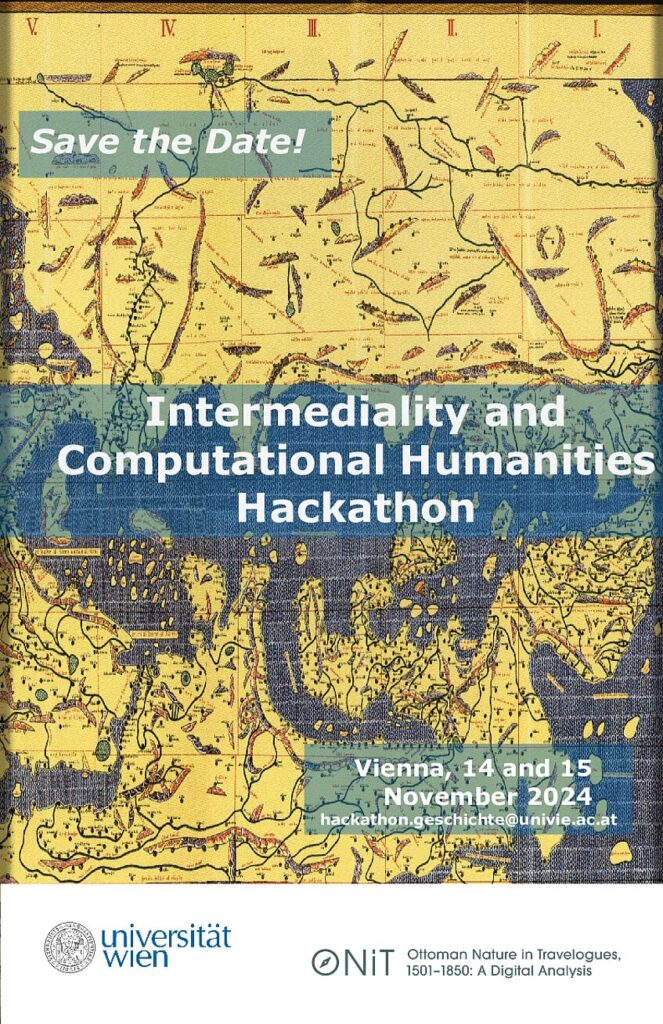

Analysing intersections and interconnections of different media in digitised sources has recently gained attention in Arts, Humanities, and Digital Humanities (DH). In a paper published last year, Smits and Wevers make their case for a multimodal turn in DH. New technologies like large language models provide automated support for recognising specific contents, structures, and relations within pictorial and textual contents of cultural heritage data. But how are research communities approaching the analysis of text and image sources? Which challenges do researchers encounter when dealing with multimodal sources?
The Digital Humanities Team at the University of Vienna and the Ottoman Nature in Travelogues (ONiT) project are pleased to announce a hackathon dedicated to exploring current challenges and solutions related to the analysis of texts, images, and multimodal sources. The hackathon is targeting scholars with backgrounds in Arts and Humanities as well as Computer Science with an interest in Computational Humanities methods. The aim of the hackathon is to bring together tool providers and art and history researchers to collaboratively focus on the analysis of digitised texts, images, or an inter-medial approach.
Programme
On the first day of the event, participants will be invited to propose topics and challenges related to the theme of the hackathon that they wish to work on. Working groups will then be formed from the participants to investigate these challenges. The working groups will be flexible, and participants will be welcome to work on multiple topics throughout the course of the event. With this in mind, participants are invited to bring suggestions for potential topics and lines of enquiry with them to the event.
The hackathon will include a keynote lecture and social events for the participants. Small bursaries will be available as necessary for the covering of travel costs.
If you have any questions, feel free to send us an email at hackathon.geschichte@univie.ac.at.
Expect more details soon!
